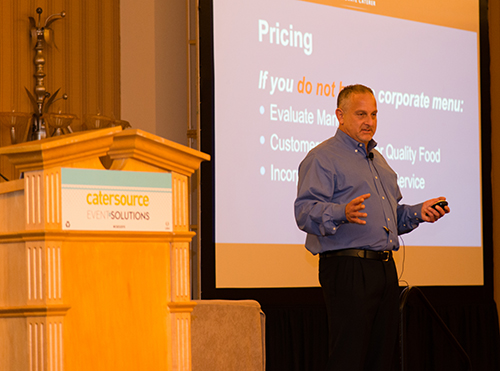During the early stages of your business, you will likely be wearing many hats. As you get settled in and build a team, learning to let go and empower employees is critical if you want to focus on growing your operation. “You are the leader of your business,” explains Eileen Spitalny, co-founder of Fairytale Brownies, a $10 million a year mail-order baking company. “In the beginning, we baked every brownie and washed every pan. But you need to trust people, give them parameters, let them learn on their own, give them feedback, and be there as their mentor, not over their shoulder.”
Both Spitalny and co-founder David Kravetz acknowledge that letting go did not come easy for them, “Looking back, we waited too long to let go, and now we realize our team members are going to grow with the more responsibility we give them”
 Part of learning how to let go is deciding to empower your employees and give them decision making authority. Deciding how much authority, how often, and what situations, however, can be challenging. After reading a how-to book on management skills, Fairytime Brownies were inspired to launch a “$100 Empowerment Policy.” This gave any team member (employee) the authority to spend up to $100 of company money to solve a customer problem without having to ask. “Interestingly, it’s taken a long time to actually get them to give up the money and a lot of times we’ll have to remind them,” explains David Kravetz. “Ninety-five percent of the problems can be solved with $100, whether it’s reshipping a gift or refunding—and they don’t have to come to us to ask. It’s money well spent.”
Part of learning how to let go is deciding to empower your employees and give them decision making authority. Deciding how much authority, how often, and what situations, however, can be challenging. After reading a how-to book on management skills, Fairytime Brownies were inspired to launch a “$100 Empowerment Policy.” This gave any team member (employee) the authority to spend up to $100 of company money to solve a customer problem without having to ask. “Interestingly, it’s taken a long time to actually get them to give up the money and a lot of times we’ll have to remind them,” explains David Kravetz. “Ninety-five percent of the problems can be solved with $100, whether it’s reshipping a gift or refunding—and they don’t have to come to us to ask. It’s money well spent.”
Alignment of values
For Steve Bell, owner of Pacific Cabinets, a multimillion-dollar cabinet business, alignment of values and the right attitude is more important than experience. “If people have the same core values that we have, if they have a great attitude, if they have the capacity and willingness to learn, then we can hire them and teach them anything they need to know about the business.” Granted, this is primarily applicable to hourly positions such as delivery staff, prep people, and customer service representatives. If you are hiring from the outside, there are some positions such as a Head Chef or Catering Operations Manager, when prior experience is suggested.
A new-hire trial period is an effective option to incorporate. Marie Ricarte, Director of Corporate Catering of Via Lago Café and Catering, a $4 million a year restaurant and catering company in suburban Boston, uses a two-week trial period to access new employees. “You can only learn so much during a 45-minute interview,” Ricarte says. “Two weeks is generally long enough to gauge whether someone is the right fit.”
On the other side, Alan Jick, owner of Via Lago Café and Catering urges, “If it becomes clear early on that you made a bad-hire, which we all do—cut bait. Over the years, I have seen managers spend way too much time, energy, and valuable resources trying to fit the wrong person into the position they were hired for.” He adds, “You can teach certain skill sets but you can’t change someone’s personality or make-up. If there’s another position for them in your organization that’s better fit, that’s an option you can explore. But if your gut is telling you that someone is not working out, letting them go sooner rather than later is acting in best interest of your business.”
For more tips and strategies on hiring best practices in the foodservice and catering industry, please visit our website at www.thecorporatecaterer.com. If you have any questions, feel free to contact me directly at [email protected].
 Mike Rosman will be teaching a half-day session on QSR/Drop Off Corporate Catering. Click here for more information.
Mike Rosman will be teaching a half-day session on QSR/Drop Off Corporate Catering. Click here for more information.



